Select your location
- North America English
- Brazil Português
- Latin America Español

Asia Pacific
- Australia English
- Germany Deutsch
- Spain Español
- United Kingdom English
- Benelux Dutch
- Italy Italiano
12 Effective Tier 1 Instructional Strategies

Table of Contents
Schools are looking for ways to address learning gaps and maximize instructional time in the wake of disrupted learning. An e ffective strategy to do this is through Tier 1 instruction . Tier 1 instruction provides all students with high-quality, initial classroom instruction tied to a guaranteed and viable curriculum powered by research-backed strategies. Tier 1 instructional strategies are essential to supporting students in the classroom. Teachers must provide high-quality instruction for their students, and building a robust instructional strategy is an excellent place to start.
However, delivering comprehensive Tier 1 instruction can be a tall order, as classrooms have many students with diverse strengths and needs. Not to mention all the other tasks teachers juggle, like grading, classroom management, synthesizing assessment data, building and maintaining student relationships, and much more.
This article will cover the following questions and essential strategies for providing all students with an equitable learning experience:
- MTSS: Framework Overview
- What is Tier 1 Instruction?
- 12 Effective Tier 1 Instructional Strategies & Best Practices
- Bringing it All Together: Tier 1 Instructional Checklist
MTSS: Framework Overview
Before covering the value of Tier 1 instruction for today’s classrooms, understanding the MTSS Framework is helpful. MTSS stands for a multi-tiered system of supports and is typically displayed as a triangle.
In this triangle, each layer represents a type of support for students' academic and behavioral needs.
Tier 1 is the broadest, most universal rung of support in which educators aim to meet the needs of most students school-wide. The level of support grows more personalized as the tiers increase. Tier 2 support identifies at-risk students across various data points, and students placed in Tier 3 are proactively supported by schools with individualized intervention plans for core subjects and behavior.
Schools use this framework to identify holistic student needs and design data-driven interventions. The belief that schools must support the whole child - academic, behavioral, and social needs - is at the heart of this framework.
What Is Tier 1 Instruction?
As previously mentioned, Tier 1 instruction provides all students with high-quality, initial classroom instruction tied to a guaranteed and viable curriculum powered by research-backed strategies.

The Tier 1 instructional programs are typically synonymous with core subjects, including but not limited to reading or math curriculum, and are often aligned with individual state standards. Proactive, evidence-based strategies allow teachers to support student learning and development.
A robust Tier 1 classroom includes:
- Standards-aligned coursework
- Rigorous, reliable assessment
- Targeted remediation and enrichment
Additionally, students should be able to accomplish the following:
- Mastery of key, standards-aligned academic skills
- Self-regulation
- Problem-solving
- Effective communication & social skills
Educators design Tier 1 interventions so all students can build these skills - regardless of their learning profile or any challenges they face outside of school.
Because every student experiences Tier 1 instruction at some point in their academic career, schools must ensure it is of the highest quality. Focusing on robust Tier 1 instruction ensures that most students receive the highest quality instruction on the front end and lessens the number of specialized interventions required.
12 Effective Tier 1 Instructional Strategies & Best Practices
Below are some strategies teachers can implement to enhance instruction in their classrooms.
- Modeling: A strategy that teachers can use frequently. Engage students by demonstrating a skill or concept and then guiding students through applying it. Modeling often involves both visual and verbal cues during instruction.
- Collaborative Learning: In this strategy, students work in groups to explore and discuss a topic. Being intentional about which students work together and establishing ground rules for listening to one another are essential for success. The world is collaborative, and offering students opportunities to learn how to collaborate early is vital to their future success.
- Inquiry-Based Learning: Student engagement remains a crucial indicator of student success . However, it can be challenging to prompt students to lead the conversation in the classroom. With Inquiry-Based Learning , teachers ask targeted questions to pique students’ interest, allow class time for topic research to promote student-led topic exploration and spark conversation in the classroom.

- Scaffolding: While differentiated instruction focuses on the student, scaffolding considers the needs of the entire class. It involves providing support to help all learners build on existing knowledge or develop new skills in the planning, designing, and delivering a lesson.
- Metacognition: Self-aware individuals reap greater satisfaction in school, relationships, and life. Allowing students to learn and practice the skills needed to be self-aware early is essential. Enter metacognition. Metacognition encourages students to analyze how they think. Educators can foster this self-awareness by providing students with research about how their brains process information (i.e., growth mindset v. fixed mindset) and allowing plenty of opportunities for reflection after completing an assignment or project (i.e., What did I learn from this assignment? Where can I grow? What feelings arose for me while I was trying to solve this problem?).
- Technology Integration: It’s no secret that we live in a digital world. The right technology in school prepares students for the world they’ll someday enter as adults. Adaptive technology, for instance, allows educators to differentiate instruction further. Schools should incorporate digital tools where possible, and ideally, these tools should integrate seamlessly with one another to amplify teaching, elevate learning, and intensify impact.
- Active Learning: Active learning engages students in hands-on activities to support their understanding and put them at the center of their learning process. Some examples of active learning include reciprocal questioning when introducing a new topic (i.e., describe x in your own words), three-step interviews where students explore a topic by asking each other questions, and peer teaching. Whereas passive learning tends to focus on the educator and the content being delivered, active learning puts students in the driver's seat.
- Problem-Based Learning: Context is critical. And learning is more engaging when students can explore real-life, complex problems together. Problem-Based Learning, or PBL , can be incorporated into most subjects. Rather than spending classroom time with teachers presenting the key information students need to succeed, PBL introduces a real-world problem and allows students to dissect and discuss it with their peers. Case studies, roleplays, and simulations are effective ways to start with PBL. The emphasis in problem-based learning is on hypothesizing and gaining knowledge through exploring rather than the solution.
- Project-Based Learning: Commonly confused with Problem-Based Learning, Project-Based Learning is another collaborative strategy where educators develop extended projects to deepen student understanding. In this strategy, students work together on open-ended assignments with multiple correct solutions. In their teams, they may create solutions that they refine with expert research or rounds of peer review. This strategy allows students to conceptualize how they might solve problems in the real world and builds their creativity.
- Game-Based Learning: Game-based learning , simply put, means using a game’s environment to engage students and help them learn. Game-based learning puts students in an environment where they can experiment. Teachers can use board games and digital gaming environments to allow students to make decisions independently, think critically about how their choices impact outcomes, and learn from failures.
- Visual Learning: Using diagrams, images, and videos to support comprehension are just some ways educators can employ visual learning as a strategy in Tier 1 instruction. Collaborative tools like Lucid for Education create a virtual environment for students to draw, design, and brainstorm. KWL charts, Venn Diagrams, and concept maps are other tools that help students visualize what they know, what they are learning, and other abstract concepts.
Each of these strategies, when implemented mindfully, provides educators with a robust toolkit to elevate Tier 1 instruction and provide all students with an engaging learning environment.
Bringing it all Together: Tier 1 Instructional Checklist
In addition to these instructional strategies, there are other ways that teachers can elevate the Tier 1 learning environment. The instructional strategies an educator implements are just one part of a successful classroom.
Here’s a Tier 1 instructional checklist to get started:
- Establish Classroom Rules and Procedures: Develop and communicate clear classroom rules and procedures that students understand and follow consistently. Learning can only happen in environments where students know what to expect. Rules and procedures allow teachers to establish consistency and build a productive learning environment. Consider giving students a voice in this process. How would they like their classroom to operate? What have they enjoyed about other classrooms? Fostering collaboration increases the likelihood that students respect and adhere to the procedures.
- Teach Positive Behaviors: Teach positive behaviors that promote academic success, such as respect, responsibility, and perseverance.
- Provide Opportunities for Student Choice : Provide opportunities for student choice and autonomy, which can increase motivation and engagement.
- Foster Positive Relationships: Develop positive relationships with students, building trust and rapport.
- Test a Variety of Instructional Strategies: Educators bring unique skill sets to their classrooms. Test out some of the instructional strategies above and continue experimenting until you find the best balance for your classroom. While some teachers may feel confident with PBL others may excel in gamification, identify your strengths and fill in any gaps by collaborating with other educators.
- Provide Consistent Feedback: Provide consistent and specific feedback to students about their performance, focusing on areas for improvement and acknowledging progress.
- Monitor Student Progress & Use Data to Inform Instruction: Monitor student progress regularly and adjust instruction accordingly. Use data to identify areas of student need and modify instruction accordingly.
- Use Technology Effectively : Use technology effectively to enhance instruction and engage students.
- Collaborate with Colleagues and Families: Collaborate with fellow teachers and families to support student learning and well-being.

Remember, the strategies and checklist provided here are just a starting point, and educators may need to adapt this checklist to fit the needs of their specific students. A good educator knows what their students need and isn’t afraid to adjust materials as required.
The right digital tools, instructional strategies, and classroom procedures enable educators to deliver enhanced Tier 1 instruction. Learn more about how Prince William County Public Schools improved Tier 1 instruction with an integrated LMS + AMS .
Discover More Topics:
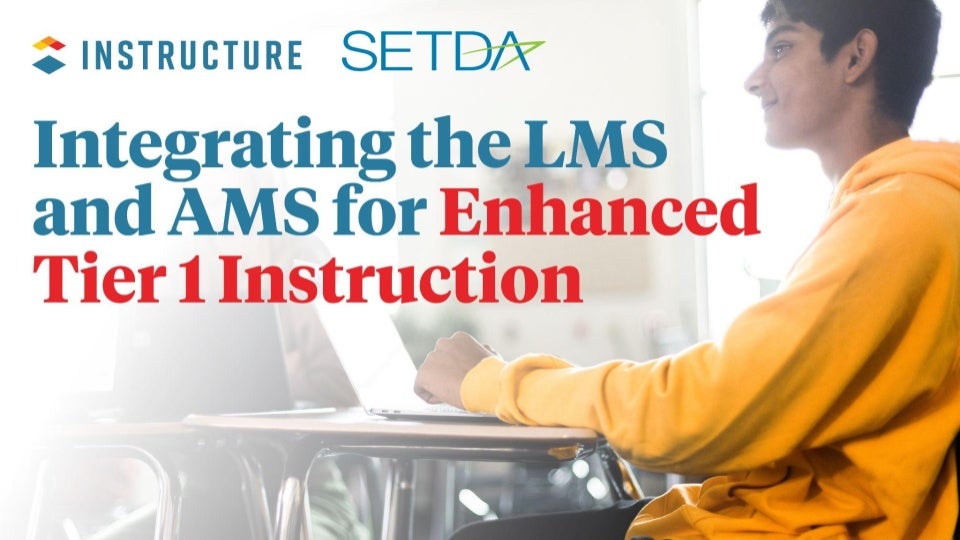
On-Demand Webinars
Integrating the LMS and AMS for Enhanced Tier 1 Instruction

Benefits of Differentiated Instruction and How to Implement It
Stay in the know.

- Center for Instructional Support
- About Mass Literacy
- Components of the Core Literacy Block
- Skills for Early Reading
- Students Experiencing Reading Difficulties
- Leading a Multi-tiered System of Support
- Equity in Early Literacy
- For Families and Communities
- Early Literacy in Educator Preparation
- Top Resources
- Recommended Reading
Tiered Instruction within the MTSS Model
High-quality, evidence-based literacy instruction for all students is a central tenet of an effective MTSS framework (Al Otaiba et al., 2011; Marchand-Martella, Ruby, & Martella, 2007). The scheduling, staffing, professional learning, and data-based decision making components of MTSS all converge on instruction with the goal of "preventing or ameliorating the effects of early risk" ( Leonard et al. , 2019). The MTSS Blueprint explains the tiers as fluid:
Movement amongst the three tiers is fluid and is not determined or defined by specific designations, such as diagnosed disabilities. Rather, movement is supported by data from universal screeners, diagnostic assessments, progress monitoring, and how a student responds to one level of intervention. Any and all students should have access to supports when they need them. In addition, obtaining services at one point does not mean that students will always need that level of support. The MTSS process is not always linear, but rather oriented around problem solving. When data suggests that students require more or less intensive supports to aid either remediation or enrichment, they will move throughout the tiers based on that need.

"As a reading specialist, I work with children who have failed to learn in the classroom, and really as educators we've failed them because we haven't given them that first tier of evidence-based instruction." Norma Hancock Reading Specialist and Doctoral Research Fellow Speech and Language (SAiL) Literacy Lab at MGH Institute
Culturally Responsive Practice and Tiered Instruction
Decisions about intervention and remedial instruction have important implications for equity. For instance, over-identification of Black children for special education has been well-documented, especially for categories that involve more subjective judgement ( Grindal et al ., 2012). When considering whether children require intervention services or remedial instruction, it is necessary to keep in mind the conditions impacting the child's learning. It should never be assumed that a child has intrinsic deficits or problems learning which require a remedial approach to teaching. There are many reasons why a child may not be meeting literacy benchmarks, ranging from inadequate instruction or resources to low expectations or prior tracking into remedial learning. Children of color "tend to be provided fewer educational resources and opportunities to learn than their majority peers during early childhood education and throughout schooling" (Sullivan & Proctor, 2016) and their learning progress is impacted by these factors.
When a child falls behind, MTSS is a powerful framework for questioning the quality of support a child has received, rather than assuming there is some sort of deficit within the child. MTSS calls for educators to consider what may have prevented a child from learning, including examining whether the child has had access to evidence-based, culturally responsive core instruction and differentiated support. MTSS can disrupt patterns of bias because it asks the educational system to better serve a child who has fallen behind and address those factors to support student success (Sullivan & Proctor, 2016). Assessing students with a valid and reliable screening assessment provides one source of objective data to proactively assess risk and determine the specific skills requiring additional instruction to help get a child back on track toward grade level success. Additionally, gathering information about the type and quality of instructional materials with which the student has been taught can illuminate the source of current difficulties and inform instructional decisions.
The MTSS Blueprint offers these resources to support districts in ensuring equitable access to instruction:
- MTSS Mobilization Guide : Provides guidance for how a school district might think about engaging in this work and where to start.
- MTSS Self-Assessment : Allows a school district to gauge where its current strengths and gaps are relative to the MTSS model.
- MTSS Resources : Links to a clearinghouse of tools and resources to support MTSS implementation
Tier 1 provides the instructional foundation within a tiered model and is often referred to as "core." Core instruction is provided to all students (Connor et al., 2007). Data from screening and progress monitoring is used to differentiate instruction within tier 1. All students must have equitable access to core instruction that addresses grade-level expectations for learning.
Tier 2 is preventive intervention offered to students who fall behind, who demonstrate difficulty based on screening measures, or who make weak progress from regular classroom instruction. Instruction in tier 2 must be targeted to the underlying difficulty(s) impacting the students' progress in literacy . Students in tier 2 receive supplemental ("in addition to") small group instruction. Importantly, this instruction should be systematic, explicit, and highly interactive. Progress-monitoring data should be used to group students periodically. Students who demonstrate improvement and exit from tier 2 support should be carefully monitored to ensure that general classroom instruction is adequate. In many studies, effective tier 2 intervention has been shown to reduce or eliminate reading difficulties in the early elementary grades ( Gersten et al, 2017 ).
Tier 3 is more intensive intervention offered to students for whom support in tiers 1 and 2 was insufficient. Instruction in tier 3 must be targeted to the underlying difficulty(s) impacting the students' progress in literacy . Ongoing tracking of student performance is critical in tier 3. If students still experience difficulty after receiving high-quality core instruction and targeted tier 2 support, they may be evaluated for possible special education services, but tier 3 is not synonymous with special education.
- Tiers are Not Locations, MTSS Module 7
- Implementation Drivers, MTSS Module 5
Tier definitions adapted from Gersten et al., 2009 ; Gersten et al., 2017 ; RTI Action Network .
Assigning students to tiers of instruction and targeting support in tiers 2 and 3 is part of data-based decision making .
- Hill for Literacy Program Framework by Grade
- Hill for Literacy Staffing for Small Group and Intervention Worksheet
Effective Intervention Instruction
Specific to reading intervention, The National Center on Intensive Intervention (2018) outlines the following instructional principles:
- Explicit instruction
- Systematic instruction
- Precise, simple, and replicable language
- Including providing a "double dose" of instruction in which a previously taught skill is retaught, using small group or one-on-one instruction, and/or using technology to facilitate reading practice (Gersten et al., 2008)
- Frequent opportunities to respond and interact
- Specific error correction and feedback
For information about effective intervention instruction in relation to dyslexia, see Chapter 6 in the Massachusetts Dyslexia Guidelines.
Effective instruction in all tiers includes Universal Design for Learning principles.
Leveraging Linguistic Assets for Multilingual Learners
English learners must have equitable opportunity to meaningfully participate in all foundational skills instruction. Please refer to WIDA Can Dos , WIDA Instructional Supports , and Supporting Early Literacy for Multilingual Learners (Instruction Partners) for information and strategies to support English Learners.
- Realizing the Potential of RTI: Considerations When Implementing RTI with English Language Learners , from RTI Action Network (Video)
- Meeting the Needs of English Learners with and without disabilities, Brief 4: Fostering Collaborative Partnerships with Families of English Learners Within a Multitiered System of Supports (grade3+), from Project LEE, Project ELLIPSES, & Project ELITE 2 . (2021).
- Meeting the Needs of English Learners with and without disabilities, Brief 2: Evidence-Based Tier 2 Intervention Practices for English Learners (grade3+), from Project ELLIPSES, Project LEE, & Project ELITE 2 . (2020).
- IES Practice Guide Assisting Students Struggling with Reading: Response to Intervention (RtI) and Multi-Tier Intervention in the Primary Grades
- Recommendation 2 IES Practice Guide: Provide intensive small-group reading interventions (Resource)
- Recommendation 3 IES Practice Guide: Provide intensive, systematic instruction on up to three foundational reading skills in small groups to students who score below the benchmark on universal screening (Resource)
- Strategies for Scheduling: How To Find Time to Intensify and Individualize Intervention , from National Center On Intensive Intervention (Resource)
- Literacy instruction strategies for success: Multi-tier intervention in primary grades , from Institute for Education Sciences (Video)
Al Otaiba, S., Folsom, J. S., Schatschneider, C., Wanzek, J., Greulich, L., Meadows, J. (2011). Predicting first-grade reading performance from kindergarten response to tier 1 instruction. Exceptional Children, 77(4), 453–470.
Connor, C. M., Morrison, F. J., Fishman, B. J., Schatschneider, C., & Underwood, P. (2007). The early years: Algorithm guided individualized reading instruction. Science, 315(5811), 464–465.
Coyne, M. D., Oldham, A., Dougherty, S. M., Leonard, K., Koriakin, T., Gage, N. A., Gillis, M. (2018). Evaluating the effects of supplemental reading intervention within an MTSS or RTI reading reform initiative using a regression discontinuity design. Exceptional Children , 84 (4), 350–367.
Gersten, R., Newman-Gonchar, R. A., Haymond, K. S., & Dimino, J. (2017). What is the evidence base to support reading interventions for improving student outcomes in grades 1–3? (REL 2017-271). Washington, DC: U.S. Department of Education, Institute of Education Sciences, National Center for Education Evaluation and Regional Assistance, Regional Educational Laboratory Southeast. Retrieved from http://ies.ed.gov/ncee/edlabs .
Gersten, R., Compton, D., Connor, C.M., Dimino, J., Santoro, L., Linan-Thompson, S., & Tilly, W.D. (2008). Assisting students struggling with reading: Response to Intervention and multi-tier intervention for reading in the primary grades . A practice guide. (NCEE 2009-4045). Washington, DC: National Center for Education Evaluation and Regional Assistance, Institute of Education Sciences, U.S. Department of Education.
Grindal, Todd & SCHIFTER, LAURA & Schwartz, Gabriel & HEHIR, THOMAS. (2019). Racial Differences in Special Education Identification and Placement: Evidence Across Three States. Harvard Educational Review. 89. 525-553. 10.17763/1943-5045-89.4.525.
Marchand-Martella, N. E., Ruby, S. F., & Martella, R. C. (2007). Intensifying reading instruction for students within a three-tier model: Standard- protocol and problem-solving approaches within a Response to-Intervention (RTI) system. TEACHING Exceptional Children Plus, 3(5), n2.
Moats. L.C.& Tolman, C. A. (2019). LETRS (3rd edition). Voyager Sopris Learning.
Sullivan, A. L. & Proctor, S. L. (2016). The Shield or the Sword? Revisiting the Debate on Racial Disproportionality in Special Education and the Implications for School Psychologists. School Psychology Forum: Research in Practice, 10(3), 278–288.
Taylor, J. A., Getty, S. R., Kowalski, S. M., Wilson, C. D., Carlson, J., & Van Scotter, P. (2015). An efficacy trial of research-based curriculum materials with curriculum-based professional development. American Educational Research Journal, 52 (5), 1–34.
Last Updated: December 29, 2022
Massachusetts Department of Elementary and Secondary Education 135 Santilli Highway, Everett, MA 02149
Voice: (781) 338-3000 TTY: (800) 439-2370
Disclaimer: A reference in this website to any specific commercial products, processes, or services, or the use of any trade, firm, or corporation name is for the information and convenience of the public and does not constitute endorsement or recommendation by the Massachusetts Department of Elementary and Secondary Education.
High Impact Tutoring Built By Math Experts
Personalized standards-aligned one-on-one math tutoring for schools and districts
Free ready-to-use math resources
Hundreds of free math resources created by experienced math teachers to save time, build engagement and accelerate growth

Tier 1 Interventions To Support Student Success: 16 Tried And Tested Strategies
Jackie Wassell
Tier 1 interventions are the first stage of multi-tiered system of supports (MTSS), an intervention framework intended to identify and address the academic, behavioral, and social-emotional needs of students. MTSS interventions may be school-wide or cover an entire school district if there is a similar school climate across the district.
In this article, we will look at Tier 1 interventions, the first tier of the Multi-Tiered System of Supports (MTSS) framework and what it looks like in the math classroom.
What are Tier 1 interventions?
Tier 1 intervention is high-quality classroom instruction that ensures the curriculum reaches 100% of students in the classroom.
For this to happen, teachers must ensure:
- Curriculum is research-based
- Educators are implementing best practices
- Targeted small group instruction is clear
- Differentiated instruction is available
Tier 1 intervention is not to be confused with differentiation. Differentiation is a planned part of day to day lessons and provides students flexible options to help them access grade-level content.
While differentiation is not an intervention, it can be used as part of Tier 1 intervention as an initiative to reach all students.
Differentiation can be related to several factors:
- Environment – for example, seating
- Resources – for example, the use of different manipulatives
- Work – for example, scaffolded math problems to best fit students’ needs
Unlike planned in-class differentiated support, Tier 1 intervention initiatives are intended to support students falling behind. Schools and districts may assess their effectiveness in staying on track through interventions and address areas of improvement.
Intervention may require a team to provide the best intervention plan. Often, this involves professionals and resources outside of the classroom, including:
- building administrators
- specialists
- faculty members
- community members
Another important component of Tier 1 intervention in MTSS is the social-emotional and behavioral aspects. This makes it different from other intervention systems such as Response to Intervention (RTI) and PBIS (Positive Behavior Intervention and Supports).
Tier 1 of MTSS ensures expected behaviors are explicitly taught, and classroom routines and efficient transitions are in place.
While these initiatives are largely part of normal classroom planning, they are considered an intervention because they require a plan. Schools or districts usually provide all of the necessary components and expectations of Tier 1 interventions for teachers to follow very closely.
By making sure this plan is followed very carefully, the school or district can assess its effectiveness through progress monitoring . For Tier 1, the intervention plan is deemed effective if 80% or more of the students are meeting or exceeding expectations.
If less than 80% of the students are reaching the designated benchmark, the school or district will identify which areas need improvement and adjust the Tier 1 intervention plan.
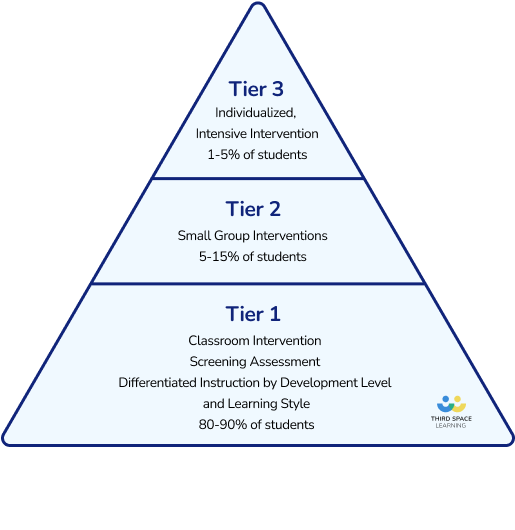
Effective Math Interventions: A Guide for Schools and Districts
A guide for school leaders to implementing successful Tier 1, Tier 2, and Tier 3 math interventions, with detailed recommendations and examples for each tier
What is the importance of Tier 1 interventions?
Tier 1 interventions are particularly important to the MTSS framework because they provide a baseline to ensure all students receive high-quality education. They also help to identify the need for further interventions.
These interventions benefit schools and students in multiple ways:
- Schools or districts can provide high-quality, research-based instruction
- It is easier to identify areas where school improvement is needed
- They help to identify students who may need more personalized intervention
Tier 1 of the MTSS framework helps schools provide interventions with intention and help meet student needs. They ensure academic, behavioral, and social-emotional needs are being addressed.
One of the most important components of a quality Tier 1 intervention plan is the implementation of evidence-based strategies. Every strategy must be chosen purposefully, with plenty of research to back up its effectiveness.
Using evidence-based strategies allows the intervention planning team to understand why those initiatives may be a good fit for their context and students’ specific needs.
When are Tier 1 math interventions necessary?
Educators and schools can use assessment data as well as the problem-solving approach below to determine if a Tier 1 intervention is necessary.
The problem-solving approach follows four steps:
- Define: what is the problem?
- Analyze: why is this problem occurring?
- Implement: use evidence-based interventions to address the problem
- Evaluate: how well is the intervention working?
These steps can be repeated throughout the MTSS process to monitor student progress and interventions.
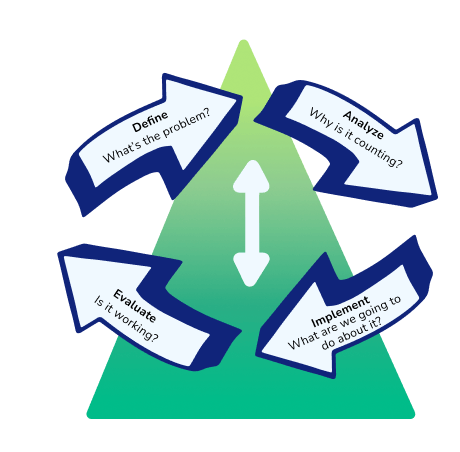
5 examples of Tier 1 math interventions
Not all Tier 1 interventions look the same in practice. Tier 1 math intervention strategies should be adapted to meet the needs and context of your school or district.
1. Small group
Small groups are a helpful initiative for differentiated instruction in your math classroom. Students with similar instructional needs can work together in a small group to keep instruction relevant and targeted.
By putting students in groups that target their specific needs, you can provide group interventions to a diverse group of students.
For example, you may be working on adding fractions with unlike denominators in your class but some students may still need targeted instruction for creating equivalent fractions.
Small groups can be adjusted regularly depending on student’s understanding and growth, as well as the topic being covered.
2. Using math tools and manipulatives
Math manipulatives can be used in the classroom to create hands-on experiences for students to visualize mathematical problems and situations.
Offering manipulatives to students is a great way to support all students form a conceptual understanding of math problems.
Providing students with a choice of manipulatives gives them autonomy to work with the manipulatives that work best for them.
Some math manipulatives include:
- fraction tiles
- pattern blocks
- cuisenaire rod
- whiteboards and markers
In cases where underprivileged students do not have access to manipulatives, it is possible to draw these visuals on whiteboards or paper or if you are able, you can draw and cut them out of paper.
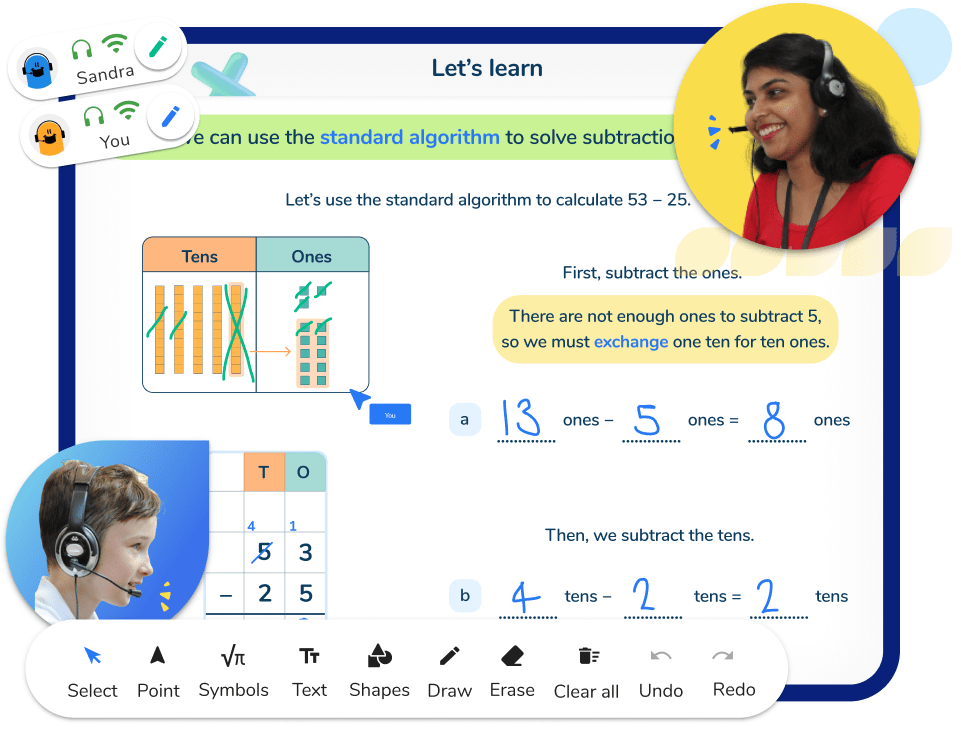
3. Research-based curriculum
A research-based curriculum focuses on the core instruction taking place in the classroom.
Generally, this will need to take place at the school or district level to ensure schools have a well-researched math curriculum. With many research-based curricula, it is important to determine which one would be a good fit for your school or district.
4. Setting goals
Goal setting is a powerful tool. While teachers can set math goals for students, it is empowering for students to create their own goals.
This metacognitive strategy encourages students to check their understanding and recognize the areas they need to work on. Building this self-awareness means students start to understand themselves better as learners and mathematicians.
5. Setting clear expectations
Student behavior and social-emotional skills are a key aspect of MTSS. To succeed in these areas in the mathematics classroom, there must be clear expectations for what appropriate behavior looks like.
This includes:
- Transition between whole group, small group, and individual instruction
- Handling of math materials
- Organizing math resources
- Group work ethic
16 tried and tested strategies for Tier 1 interventions
Below, we share with you strategies to support the success of Tier 1 interventions at every stage, from setting initial goals to implementation, intensification and boosting student engagement.
6 steps for setting Tier 1 goals
1. decide which goal you will aim for with your tier 1 goal assessment .
Use a goal assessment to figure out the focus of your Tier 1 intervention plan. There are many components to the MTSS framework, including academic, behavioral, and social-emotional supports and using a goal assessment will help determine focus areas.
2. Make a list of possible strategies that will address the goal
Consider the strategies that will help achieve your Tier 1 intervention goal. These should be evidence-based strategies and appropriate for the goal.
3. Select the strategy that will be used
Under the Every Student Succeeds Act, there are four tiers or levels to evidence-based practices. Categorize your list of strategies using these levels to determine which strategies may be more effective than others. These levels are:
Level 1: Strong evidence
Interventions require evidence from studies with a significantly positive impact on student outcomes, without negative findings. Findings should come from well-designed, well-implemented, experimental studies examining the same interventions and outcomes.
Level 2: Moderate evidence
This requires evidence from studies that have had a positive impact on student outcomes. Again, evidence must come from well-designed, well-implemented, experimental or quasi-experimental studies examining the same interventions and outcomes.
Level 3: Promising evidence
Level 3 strategies require evidence from at least one correlational study with statistical controls for selection bias. Generally, this is a statistical model for determining the relationship between two variables.
Level 4: Demonstrates a rationale
This rationale is based on high-quality findings or positive evaluation that an intervention is likely to improve student outcomes.
The difference between the first three tiers of evidence-based research is the type of study. Evidence in the first three tiers is trusted to be “well-designed and implemented” and seek statistically significant results.
Strategies fitting into any one of these tiers would be a valuable strategy to consider. They are all evidence-based and only differ by the type of research that was conducted.
Narrow strategies down to one effective evidence-based choice. The more quality research you can find, the stronger the strategy will be.
4. Plan logistics for the strategy
Think through how the chosen strategy will be implemented:
- What time is required to implement the strategy effectively?
- How much planning is involved?
- What materials will you need?
- How will you obtain those materials?
- Will any extra staff be needed?
5. Who will provide high-quality instruction?
It is most likely the classroom teacher will carry out Tier 1 interventions since all students should receive high-quality curriculum and instruction.
But when additional support is needed, consider who will deliver it. If you are focusing on social-emotional or behavioral based, which experts are available to work with teachers in implementing evidence-based strategies?
6. Monitor progress and set a review date
All MTSS strategies must be monitored and evaluated to ensure they are effective. Decide what monitoring will look like and the methods that will be put in place.
Set a review date to check in on progress and evaluate the effectiveness of the intervention initiative.
- Is it working?
- Does it need amending?
5 strategies to provide intensification in Tier 1 math interventions
1. frequency of lessons.
A lot of times, quality is prioritized over quantity. However, more exposure to math concepts and practice opportunities can benefit some students.
More frequent lessons also provide opportunities for multiple mathematical strategies, manipulatives and tools to deepen understanding.
2. Opportunities to work in small groups
Small group work helps teachers and students. It allows teachers to target instruction more effectively. It also allows students to receive the specific help that they need with the assignments they are working on.
3. Duration of lessons
Keep lessons concise. Who is talking the most?
Aim for a classroom where students are doing most of the talking. They should be at the center of the learning. It can also help to keep them on track and focused on the curriculum.
4. Grouping students
Think outside the box. While it may be tempting to consider dividing your class into equal size groups, this is not always the most effective way.
Start by looking at the curriculum content and form groups based on the misconceptions you want to focus on. For instance, when working on the standard algorithm for multiplication, you may want a group that focuses on regrouping and another group where regrouping occurs more than once.
Then decide which students fit into which group, most likely the group sizes will be different! If one group is too big, split this group into smaller groups to work on the same material.
Not all groups may get to work with an adult in one lesson. A rotating schedule can be helpful to try and work with all groups in one week.
Whichever rotating group model you choose, the quality of your interventions can far outweigh the frequency of your interventions.
5. Positive reinforcement
Students respond well to positive reinforcement — especially when working through tough challenges.
Math can be challenging and requires problem-solving, communication, metacognition, and perseverance. Praising effort helps encourage students to persevere.
Make positive reinforcement specific and highlight the mathematical thinking or strategy the student is using well.
Praising students to the whole class encourages others to adopt the same successful mathematical thinking or strategies.
5 strategies to boost Tier 1 math engagement
Tier 1 intervention aims to reach all students, however, if students are not engaged, they are not learning.
Here are 5 strategies to boost Tier 1 student engagement:
1. Justification
There is more to mathematics than knowing the right answer. It is equally important to justify an answer or a strategy. Asking students to justify themselves in the mathematics classroom opens the door to rich mathematical discussion and vocabulary, engaging students in the process.
2. Make connections
Connections are everywhere in math. While some students will make these connections themselves, others may struggle. Design lessons that lend themselves to these discoveries.
Introduce a new mathematical concept by looking at a mathematical concept students already know.
For example, when learning how to multiply a whole number by a fraction, remind students of multiplication with whole numbers. Using simple connections to come up with strategies for related concepts engages students in the subject as a whole.
3. Mathematical discourse
Math talk is one of the best ways to keep all students engaged. This can be done through:
- number talks
- group tasks
- small group lessons
- whole-group discussions
- partner work
Problem-solving together deepens conceptual understanding and keeps students engaged.
Math discourse as part of a Tier 1 intervention plan also helps teachers work on the behavioral expectations in their classroom.
Many teachers feel apprehensive about group work. But with clear expectations given beforehand, classroom management will be easier. Students can thrive in this type of learning environment and have stronger learning experiences and better social skills in the long term.
4. Make objectives clear
If students are unclear about the math objectives, they will find it hard to stay engaged.
Ensure students are aware of the end goal while they are working on a task. Working backwards can help them understand the relevance and importance of their work.
A lack of purpose and direction can result in a lack of engagement.
5. Challenge students
When students are not feeling challenged, they will not be engaged. Differentiation, scaffolding, and small groups are key. These classroom strategies ensure that each student is being challenged appropriately in the math classroom.
Tier 1 high-leverage interventions
High-leverage interventions are defined as “proven” interventions that have data to support their effectiveness. These would make appropriate interventions to implement in a Tier 1 intervention.
4 examples of high-leverage Tier 1 elementary math interventions
1. mathematical discourse.
Mathematical discourse research shows significant improvement in student engagement and academic success compared to classrooms that do not utilize it.
Learners talking about math through reasoning, justification, problem-solving and discussion increases their conceptual understanding and engages them.
Research has shown that mathematical discourse when combined with social emotional learning (SEL) further improves engagement and learning outcomes, which works very well with the goals of MTSS.
2. Developing math self-concept
Math self-concept relates to how students view themselves in the context of the mathematics classroom.
Many people claim they are not a “math person” but this perception of themselves can be changed.
Research has shown that improving students’ math self-concept, improves their engagement and academic success.
Additionally, creating a sense of belonging in the mathematics classroom creates space to work on social-emotional learning.
3. Personalized learning with technology-based interventions
Technology-based interventions have been shown to improve student engagement in the mathematics classroom.
Personalized learning motivates students, provides autonomy over their learning experiences and increases their achievement.
Like all interventions, technology-based learning should be evidence-based and support social classroom interactions.
4. Socially and culturally responsive interventions
Making math interventions socially and culturally responsive helps students to see the relevance of mathematics in their day-to-day lives.
It also improves their math self-concept as they can understand how mathematics applies to their everyday life.
How Third Space Learning can support Tier 1 math interventions
Third Space Learning’s team of math experts have created a wide range of formative and summative assessments to help educators identify students in need of a Tier 1 math intervention. From exit tickets to practice state assessments , the Third Space Learning resource library is home to a multitude of assessments.
You can also find an abundance of topic guides for each math strand to help with small group work and correlating worksheets to support interventions.
Math intervention packs , taken straight from our one-on-one math tutoring sessions, can be downloaded to reinforce mathematical concepts and address misconceptions for the students who need it most.
Find everything you need for your Tier 1 math intervention in the resource library .
More Response to Intervention support:
- Tier 2 intervention
- Tier 3 intervention
- Guide to summer tutoring programs
Tier 1 interventions FAQs
Tier 1 intervention is the foundation for all other interventions, where the focus is on high-quality, evidence-based classroom instruction. Schools may focus on implementing a new math curriculum, math strategy or small group work.
Examples of Tier 1 interventions include: • Working in small groups • Using math manipulatives or tools • Working on setting goals • Implementing a research-based curriculum • Setting clear expectations
Tier 1 interventions involve high-quality classroom instruction and are provided to all students while Tier 2 and Tier 3 interventions are more intensified and individualized. Tier 2 interventions are targeted to specific individuals addressing learning gaps. Tier 3 intervention involves more intensive support when students are not progressing in Tier 2.
Do you have students who need extra support in math? Give your students more opportunities to consolidate learning and practice skills through personalized math tutoring with their own dedicated online math tutor. Each student receives differentiated instruction designed to close their individual learning gaps, and scaffolded learning ensures every student learns at the right pace. Lessons are aligned with your state’s standards and assessments, plus you’ll receive regular reports every step of the way. Personalized one-on-one math tutoring programs are available for: – 2nd grade tutoring – 3rd grade tutoring – 4th grade tutoring – 5th grade tutoring – 6th grade tutoring – 7th grade tutoring – 8th grade tutoring Why not learn more about how it works ?
Related articles
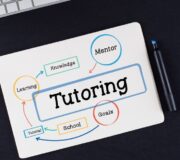
How To Choose Effective Summer Tutoring Programs For Your Students

Research Based Mathematics Interventions: 7 Strategies To Boost Learning

What Are MTSS Interventions And How Can You Implement Them Successfully?

10 Strategies To Accelerate Educational Achievement Through Individualized Learning
Math Intervention Checklist [FREE]
Want to ensure your math intervention has the maximum impact on the students who need it most?
Get your hands on this essential step-by-step checklist to help you select, manage and evaluate the best math intervention programs for your students.
Privacy Overview
- Multi-Tiered System of Supports Build effective, district-wide MTSS
- School Climate & Culture Create a safe, supportive learning environment
- Positive Behavior Interventions & Supports Promote positive behavior and climate
- Family Engagement Engage families as partners in education
- Platform Holistic data and student support tools
- Integrations Daily syncs with district data systems and assessments
- Professional Development Strategic advising, workshop facilitation, and ongoing support
- Success Stories
- Surveys and Toolkits
- Product Demos
- Events and Conferences
.png)
2024 State of Chronic Absenteeism Report
Explore what millions of students tell us about the link between school climate and chronic absenteeism.
- Connecticut
- Massachusetts
- Mississippi
- New Hampshire
- North Carolina
- North Dakota
- Pennsylvania
- Rhode Island
- South Carolina
- South Dakota
- West Virginia
- Testimonials
- About Panorama
- Data Privacy
- Leadership Team
- In the Press
- Request a Demo

- Popular Posts
- Multi-Tiered System of Supports
- Family Engagement
- Social-Emotional Well-Being
- College and Career Readiness
Show Categories
Tier 1 Instruction: A Complete Guide

Sam DeFlitch

When districts prioritize and fortify Tier 1 instruction, they see enhanced academic outcomes across the board. This robust foundation acts as a catalyst, driving collective achievement and ensuring that every student receives a quality education tailored to their needs.
While a strong Tier 1 foundation is key, districts may find it challenging to translate their vision into tangible classroom practices. Join us as we delve deeper into Tier 1 instruction, exploring strategies and insights to cultivate the universal support students so rightfully deserve.
What is Tier 1 Instruction?
Tier 1 instruction, often termed universal support, encompasses the foundational teaching and learning strategies provided to all learners. When building a tiered intervention menu , Tier 1—as it’s aptly named—is the very first level of student support. In essence, Tier 1 instruction forms the initial, critical layer of intervention, and is pivotal in laying the groundwork for subsequent tiers of support.
A comprehensive approach to Tier 1 instructional strategies addresses more than just academics. It delves into the behavioral and social-emotional facets of a student's life. In turn, this foundation allows districts to adopt a proactive stance, anticipating potential challenges and equipping educators with the tools and strategies to foster a positive learning environment for all.
Benefits of a Strong Tier 1 Foundation
Effective Tier 1 instruction is a game-changer for educators and leaders. It simplifies lesson planning, offering a structured approach that enhances teaching consistency. Beyond this, it ensures that every student receives consistent foundational support, setting them up for success in more advanced concepts and skills.
Streamline Lesson Planning
Tier 1 instruction offers educators a structured roadmap, making the lesson planning process more efficient and purposeful. Teachers can rely on the foundational principles of Tier 1 to craft comprehensive and inclusive lessons. This structured approach ensures that core content is effectively delivered to all students. By having a clear Tier 1 framework, educators can allocate their time more strategically, focusing on enhancing the quality of instruction rather than constantly reinventing the planning wheel.
Individualizing Student Support
A strong Tier 1 foundation empowers educators to more readily identify students who may require additional assistance or enrichment. When the foundational needs of the majority are met through Tier 1 strategies, teachers can allocate resources and interventions more effectively for those students who need specialized attention. This proactive approach not only enhances the learning experience but also creates a more responsive environment where individual student needs are recognized and addressed promptly.
Supporting Staff Efficiency
A solid Tier 1 foundation is not just for the classroom; it has a ripple effect throughout the entire school system. By establishing a strong foundational framework for all students, Tier 1:
- Reduces the influx of preventable challenges or gaps that might otherwise strain support resources.
- Allows support staff to operate within clearer parameters, focusing their expertise on targeted interventions rather than widespread remediation.
- Streamlines and simplifies administrative tasks through making decision-making more informed and effective
- Supports allocation of resources where they are needed most to optimize outcomes for both educators and students.
- Ensures that every member of the educational community, from educators to specialized support personnel, can work collaboratively and efficiently, maximizing the impact of their efforts across the board.
Collective Benefits for the Educational Community
Schools with well-established Tier 1 practices foster a positive school climate , promoting collaboration and mutual support among educators, students, and the broader community. This positive environment has a strong positive impact. As workload pressures diminish, educators can focus more on innovative teaching, leading to improved student outcomes and, in turn, further enhancing the school's positive atmosphere.
Strengthening Tier 1 Instruction Across Districts
Navigating the intricacies of Tier 1 instruction requires a multifaceted approach that acknowledges the diverse needs of students and the evolving landscape of education. To establish this foundational level of instruction across a district, several strategies emerge as particularly impactful.
- Differentiated Instruction Techniques By offering varied approaches within the same lesson, educators can ensure that all students—regardless of their starting point—can grasp and apply concepts effectively.
- Professional Development Programs Regular training sessions, workshops, and seminars not only keep teachers updated with the latest in pedagogical strategies, but also equip them with tools to adapt and innovate in the classroom.
- Data-Driven Decision Making Utilizing real-time student data and regularly analyzing assessment results empowers educators to make informed instructional decisions, ensuring that Tier 1 instruction remains relevant and impactful.
- Collaborative Teaching Practices Building a culture of collaboration among educators promotes a sharing of best practices. When teachers work together, they can pool resources, brainstorm solutions to challenges, and create a unified approach to instruction that benefits all students.
- Integration of Technology By using an MTSS platform, educators can better understand when a student needs more support. With this insight, educators can determine ways to engage students in more personalized and relevant ways.
- Family and Community Involvement By fostering strong partnerships with parents and local stakeholders, schools can create a cohesive support system for students, ensuring consistent learning opportunities both inside and outside the classroom.
Examples of Tier 1 Instruction
Tier 1 instruction strategies not only simplify the complexities of teaching, but also lay the groundwork for a more enriched and supportive educational environment. Let's explore the real-world applications of Tier 1 instruction, illustrating how these practices can bring about meaningful change in classrooms and communities alike.
Writing Instruction
Writing stands as a foundational pillar of Tier 1 instruction, yet it frequently contends with reading for instructional focus. While reading often takes precedence due to standardized testing priorities, writing remains vital across all subjects.
Educators seeking to bolster their Tier 1 instruction should consider implementing writing strategies that not only enhance writing skills, but also enrich the broader instructional landscape. Some of these can be:
- Paragraph Burger A widely recognized writing intervention strategy , the Paragraph Burger serves as a tangible tool for students across all grade levels and genres. This visual graphic organizer not only simplifies but also enriches the planning phase of writing. By breaking down the structure of a paragraph into its core components, students can visualize the relationship between topic sentences, supporting details, and concluding statements, ensuring a well-rounded composition.
- Four-Square The Four-Square method simplifies the intricacies of planning and organization in writing. This straightforward graphic organizer provides students with a structured framework, helping them categorize ideas, sequence thoughts, and maintain coherence throughout their writing. Whether crafting a narrative or an argumentative piece, the Four-Square method acts as a reliable guide, ensuring clarity and purpose in student compositions.
- Mentor Texts Beyond structural aids, the influence of exemplary writing is paramount. Mentor Texts, which encompass a range of published works, serve as goldmines of inspiration and instruction. By immersing themselves in published writing, students gain exposure to diverse writing styles, techniques, and tones. Through observation, rereading, and detailed analysis, students not only appreciate the artistry of proficient writing but also internalize strategies that they can adeptly incorporate into their own creations.
Read More: 5 Research-Based Writing Interventions for Your MTSS
Behavior Interventions
In response to rising behavioral challenges intensified by recent events, schools are increasingly turning to a Positive Behavioral Interventions and Supports (PBIS) framework.
Embedded within your MTSS, PBIS offers tiered behavioral strategies, emphasizing both preventative measures and responsive supports, thereby contributing significantly to cultivating positive school environments and enhancing student outcomes. Tier 1 PBIS interventions set the foundation for an entire school or district. These interventions focus on setting clear expectations for behaviors, and implementing procedures and practices for teaching the emotional and social skills needed for positive behavior.
Here are some PBIS Interventions to consider:
- Behavior-Specific Praise Behavior-specific praise goes beyond generic commendations by pinpointing and acknowledging specific positive behaviors observed in students. This tailored approach, backed by nearly three decades of research , not only reinforces classroom expectations but also fosters a clearer understanding of desired behaviors. By highlighting the particular behavior, identifying the student or group involved, and delivering the praise with genuine warmth, educators can effectively encourage more consistent positive actions, making it a pivotal tool for managing classroom dynamics and enhancing overall academic success.
- Visual Aids Visual aids are invaluable tools in the classroom, offering consistent cues that guide students through daily routines and expectations. By leveraging these aids, educators empower students to take charge of their responsibilities and reduce dependency on constant teacher guidance. They encompass tools like visual timers that help students grasp time durations, visual schedules that outline daily plans with clarity, and reminders, such as supply visuals or behavior posters, ensuring students maintain positive habits and stay organized.
- Brain Breaks Essential pauses that refresh both the mind and body, brain breaks help enhance focus and productivity in learning environments. They can range from physical activities like short exercises or walks, to mental diversions such as puzzles or breathing exercises. Effective brain breaks fully engage students, ensuring a complete shift from prior activities, which is particularly vital during distressing moments. Activities like crosswords or dance videos can effectively redirect students' attention, preventing them from dwelling on issues and ensuring a rejuvenated return to learning.
Download Now: 20 Evidence-Based Behavior Interventions: A Toolkit for District Leaders
Social-Emotional Learning (SEL)
Social-Emotional Learning (SEL) equips students with vital skills to manage emotions, set positive goals, and establish healthy relationships. By aligning Tier 1 methodologies to SEL interventions, educators can create an environment where academic success and emotional well-being are seamlessly intertwined. This ensures that students are not only academically proficient, but also emotionally equipped for future challenges. Some of these strategies include:
- Rose, Bud, Thorn This activity encourages students to reflect on their day by identifying a positive aspect (rose), something they're looking forward to (bud), and a challenge they faced (thorn). It fosters self-awareness and helps educators gauge students' emotional states. Free Download: Panorama’s Rose, Bud, Thorn Activity Worksheet
- Two Word Check-In Students express their current feelings or thoughts using just two words. This concise activity prompts students to distill their emotions, making it easier for educators to quickly understand and address their needs.
- WOOP Method An acronym for Wish, Outcome, Obstacle, Plan, the WOOP method is a goal-setting strategy. Students identify a wish, visualize a positive outcome, anticipate obstacles, and devise a plan. It combines positive thinking with proactive planning, enhancing both motivation and resilience.
Learn More : 15 Social-Emotional Learning Intervention Ideas for School and District Teams
Attendance Interventions
By ensuring students are regularly in the classroom, we pave the way for them to fully benefit from foundational lessons. In essence, by addressing attendance proactively, we're fortifying the very foundation of Tier 1, reinforcing its impact and reach within our educational settings. To support stronger attendance, school and district leaders can consider:
- Establishing a Positive School Culture Cultivating a nurturing and inclusive school environment plays a pivotal role in promoting regular attendance. When students feel valued, connected, and engaged within their school community, they are more motivated to attend regularly and participate actively in classroom activities.
- Communication and Engagement with Parents Open lines of communication between schools and families are crucial . By regularly updating parents on attendance records, sharing the importance of consistent school attendance, and seeking their collaboration in addressing any underlying issues, schools can foster a supportive home-school partnership that encourages regular attendance.
- Celebrating Attendance Milestones Recognizing and celebrating attendance achievements can be a powerful motivator for students. Whether it's acknowledging monthly perfect attendance, hosting quarterly attendance celebrations, or rewarding classes with the best attendance rates, these initiatives can instill a sense of pride and commitment among students towards attending school consistently.
- Early Intervention and Support Systems Proactively identifying students who may be at risk of chronic absenteeism and implementing targeted support can make a significant difference. By understanding and addressing the root causes of absenteeism, such as health issues, transportation challenges, or disengagement, schools can provide the necessary resources and interventions to ensure that students are present and engaged in their learning.
Free Toolkit for District Leaders: Decreasing Absenteeism
Next Steps for School and District Leaders: Strengthening Tier 1 Instruction
At the heart of education lies the belief that every student deserves the best. While the aspiration for high-quality Tier 1 instruction across social-emotional learning, behavior, and academics is universal, districts face a range of implementation challenges.
As you reflect on your district's approach, consider implementing some of the strategies we’ve discussed. Additionally, an MTSS platform like Panorama Student Success can ensure consistent support across every tier—in academics, behavior, social-emotional learning, and attendance. These strategies and tools ensure that universal supports are not just present but are robust, effective, and truly transformative for every student.
Download 18 Research-Based Interventions for Your MTSS
Related Articles
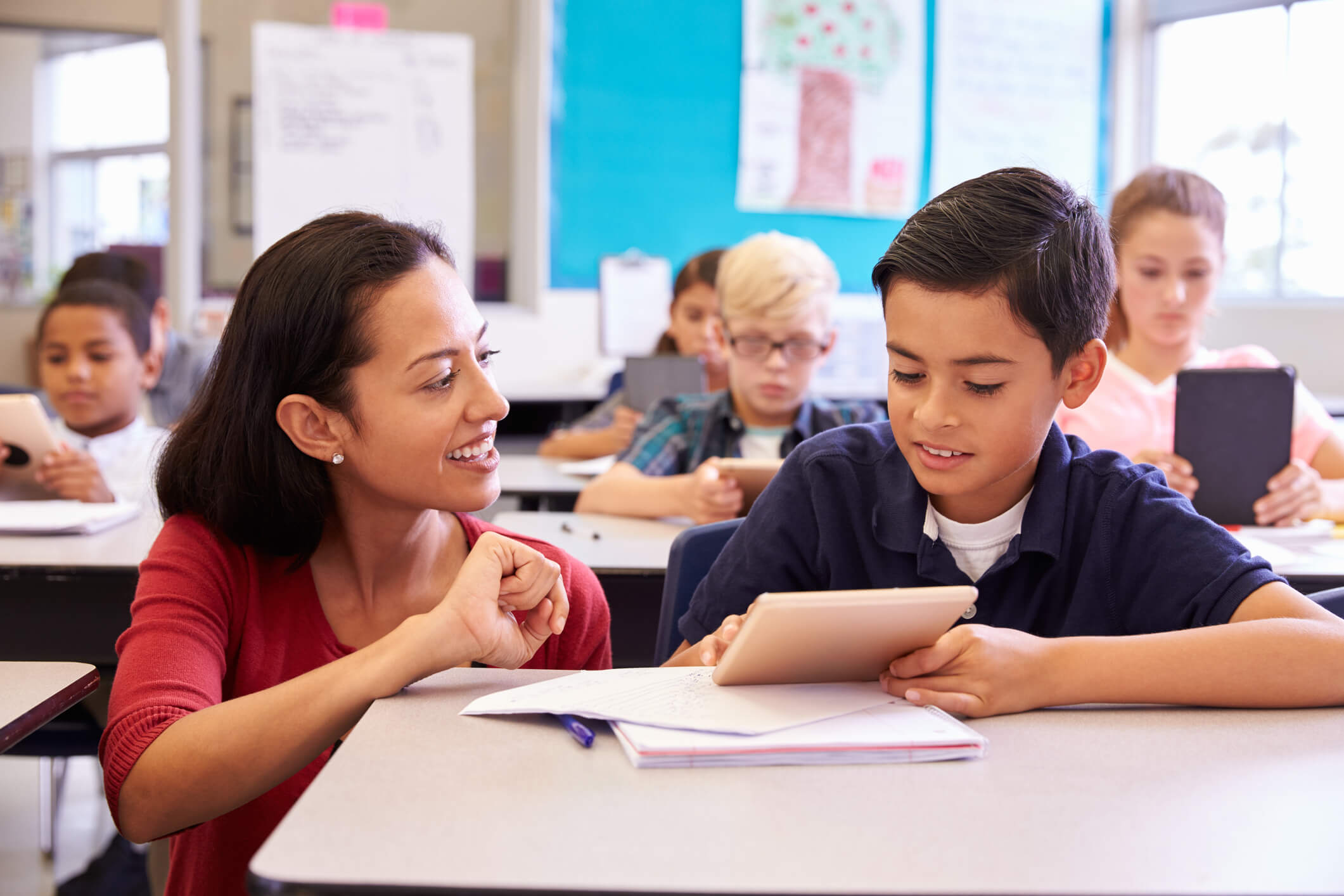
Student Relationship Mapping 101
Learn how to use Relationship Mapping to ensure that every student has a strong connection to at least one adult in their school.
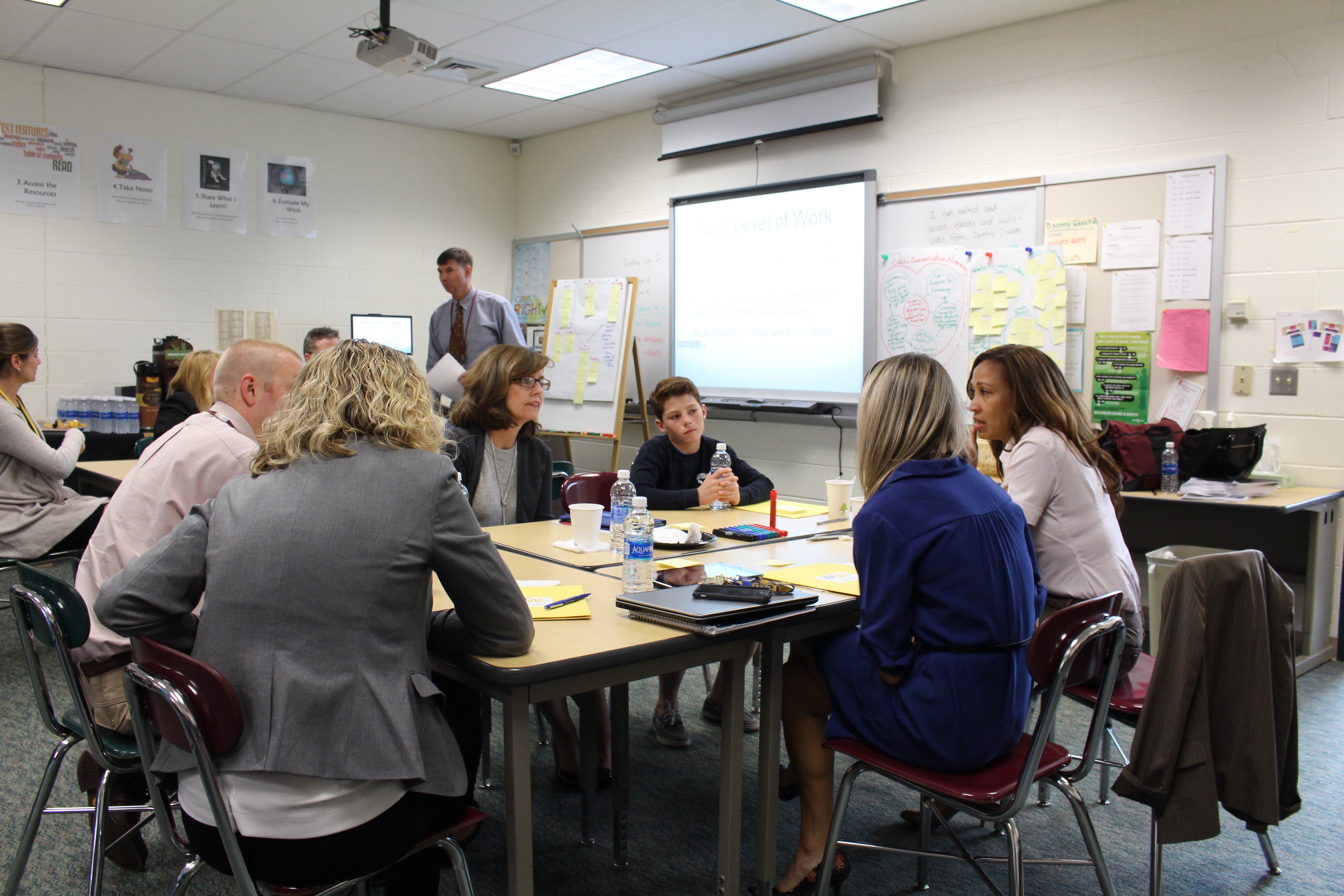
42 MTSS Intervention Strategies for Your Student Support Team
Explore effective MTSS intervention strategies for supporting students across academics, behavior, and social emotional learning.

Introduce Students to Goal-Setting with the WOOP Method
Explore the WOOP, an effective goal-setting strategy for students in grades K-12.

Featured Resource
18 research-based interventions for your mtss.
Strengthen your district’s MTSS intervention library with strategies to holistically support student learning.
Join 90,000+ education leaders on our weekly newsletter.
Iowa Reading Research Center
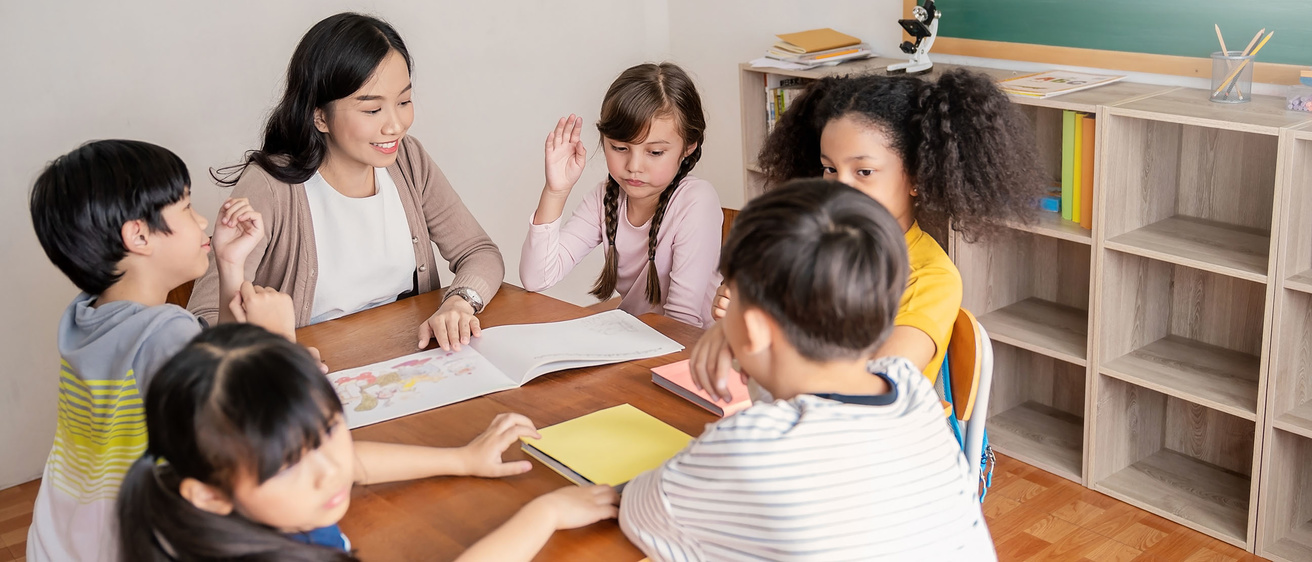

Strategies for Effective Tier 1 Grouping and Differentiation
This is the third and final post in a series of three posts that detail the process of differentiating Tier 1 instruction of foundational skills through flexible, skill-based grouping.
Our first two blog posts of the series walked through the importance of a Multi-Tiered System of Supports (MTSS) framework and the Continuous Improvement Process (CIP) in rethinking how we teach literacy in Tier 1. We specifically discussed a model in which English language arts blocks are strategically scheduled so that additional staff is available to push into a classroom or a grade level to teach foundational concepts in small groups.
Tier 1 instruction, also known as core instruction, is for all students and should allow at least 80% of students to reach grade-level expectations. Tier 1 typically consists of 90-120 minutes of instruction that follows an evidence-aligned scope and sequence and instructional routines. Ideally, interventionists push in and provide Tier 1 small-group instruction along with the classroom teacher. If students receive Tier 2 or Tier 3 instruction, that would be provided at another time and would be considered an intensified “extra dose” of the same targeted instruction they are receiving during their small group instruction in Tier 1.
Universal screening data will guide the formation of small groups, which can then be fine-tuned by carefully assessing students’ skills. Dr. Stephanie Stollar, educational consultant and creator of the Reading Science Academy, recommends that screening and diagnostic assessment data be used to make decisions about how much time is spent on word recognition and language comprehension, and how to group students for that instruction (S. Stollar, personal communication, May 3, 2024). For students who are at-risk, the use of diagnostic, prescriptive assessments helps determine where they are on the instructional continuum and where they should be placed into groups based on patterns of scores. If universal screening data show that most of the class scored similarly, then instructing in a whole group setting would be appropriate.
When teachers are working with a small group, the students who are not working with their teacher would be working in centers. Center activities should be designed for practice only—students should not be expected to engage in new skills during this time, and centers should only include activities that the teacher has seen the students do accurately. These activities can be done independently, with a partner, or in a small group. It is imperative that students be trained on how to work in centers so that instructional time is maximized.
Another option for Tier 1 grouping would be to group students within an entire grade level based on shared skill needs so that students across the grade level receive the same targeted instruction. To do so, grade-level teachers would plan together and use screening data to create groups across the entire grade. An example this, called “Walk to Read,” is explained by The Right to Read Project .
Let’s look again at the CIP and how we can use it with our scenario:
- Less than 80% of students are meeting benchmark on the universal screener, and we want at least 80% of students to meet or exceed benchmark with Tier 1 instruction.
- The goal of Tier 1 instruction is for at least 80% of students to meet grade-level expectations.
- Differentiating Tier 1 instruction of essential skills through flexible, skill-based grouping will allow teachers to provide their students with exactly what the data indicate their students need.
- Monitor teaching practices and learning outcomes.
- The only way we are going to know the answer to this question is to look at data! Progress should be monitored to determine whether the instruction is closing gaps. Teachers review data approximately every two weeks and make changes as needed. This is why grouping is considered “flexible.” Data will drive the formation of groups and the respective instruction.
Lastly, it is also important to note that, although we can plan for differentiated instruction to meet the needs of our learners, we must also consider what the data indicate our Tier 1 instruction is providing—or not providing. Eighty percent of students should meet grade level benchmarks with Tier 1 instruction alone—without intervention. If not, Stollar (2024) recommends that the team analyze and improve their Tier 1 system of supports. As she explains:
I think everybody's familiar with using screening data to identify students who are at risk. We're doing a good job now of doing that, but we're not doing such a good job using screening data to identify systems that are at risk. What I mean by that is specifically using screening data to reflect the health and effectiveness of your classroom reading instruction. (Geiger, 2023)
When our Tier 1 instruction is effective, the number of students who need interventions will be reduced, which then improves the effectiveness of Tier 2 and Tier 3 supports. We can’t intervene our way out of inadequate Tier 1 instruction. Data will tell us where the holes are, and we need to rely on the data to meet the needs of our students. Doing so may require addressing Tier 1 instruction while also leveraging the MTSS framework and following the Continuous Improvement Process.
Geiger, A. (Host). (2023, November 13). How to use assessment data within MTSS - with Dr. Stephanie Stollar (No. 146) [Audio podcast episode]. In Triple R Teaching . https://www.themeasuredmom.com/how-to-use-assessment-data-within-mtss/?utm_source=triple-r-teaching&utm_medium=podcast&utm_term=146-how-to-use-assessment-data-within-mtss-stephanie-stollar&utm_content=&utm_campaign=list
Stollar, S. (2024, March 4) . You may be right, I may be crazy. Reading Science Academy . https://www.readingscienceacademy.com/blog/Tier%201
- differentiated instruction
- Multi-Tiered System of Supports
- progress monitoring
- skills-based instruction
- small group instruction
- Tier 1 grouping

Rethinking How We Teach Literacy in Tier 1: Targeted, Small-Group Instruction

Meeting Students' Needs With Iowa's Continuous Improvement Framework and Process
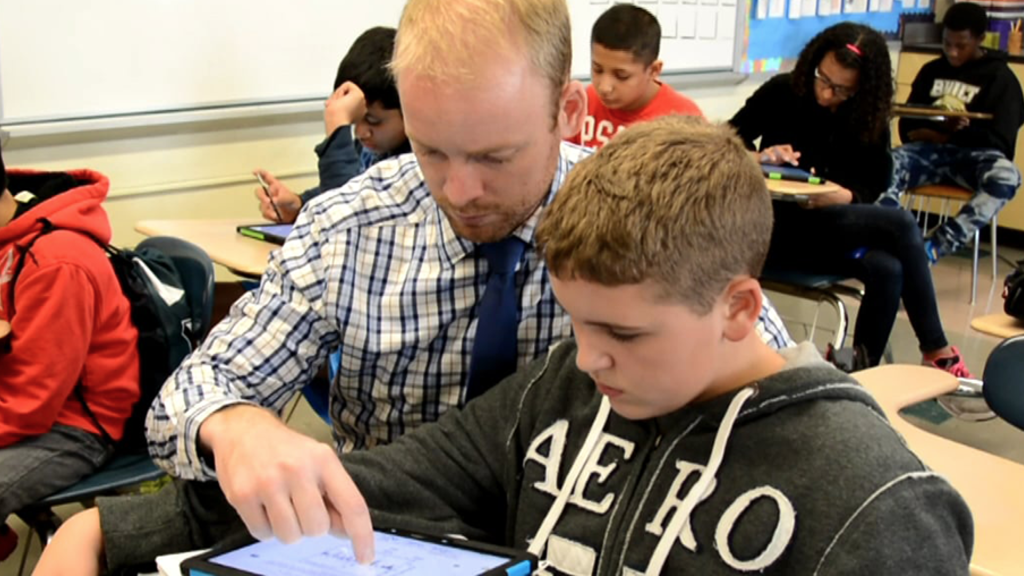
Multi-Tiered System of Supports for Reading: The Intersection With Special Education
Donate (opens in a new window)

RTI and MTSS
Best Practice for RTI: Differentiated Reading Instruction for All Students (Tier 1)
On this page:, level of evidence: “low”, brief summary of evidence, how to carry out this recommendation, roadblocks and suggested approaches.
One way to help educators identify students in need of intervention and implement evidence-based interventions to promote their reading achievement is a framework called “Response To Intervention.”
The Education Department’s Institute of Education Sciences convened a panel to look at the best available evidence and expertise and formulate specific and coherent evidence-based recommendations to use Response To Intervention (RTI) to help primary grade students overcome reading struggles. The panel made five practice recommendations. The second recommendation is to:
Provide differentiated reading instruction for all students based on assessments of students’ current reading levels (tier 1).
Ideally, classroom reading instruction would be evidence based. However, research that might provide a clear, comprehensive model of how to teach reading to students in the primary grades is lacking (NRP, 2000). The purpose of this recommendation is to discuss classroom reading instruction as it relates to RTI and effective tier 1 instruction.
In particular, we focus on the use of assessment data to guide differentiated reading instruction.
Tier 1 provides the foundation for successful RTI overall, without which too many students would fall below benchmarks.
The panel recommends differentiating instruction in tier 1. For example, during independent work time, students weak in vocabulary can practice vocabulary with a partner or in small groups, while other students form teams to brainstorm character traits and motivations for the main characters in the story they are reading that week.
Data from the various screening and progress monitoring measures in recommendation 1 should also serve a role in orchestrating differentiated instruction .
Because differentiated instruction under tier 1 requires identifying and grouping students to work on targeted skills, readers may wonder where differentiated instruction ends and tier 2 intervention begins.
Differentiated instruction applies to all students, while tier 2 instruction applies only to those at risk in key areas. The panel believes that, to be effective, a multi-tier approach can blur the lines between tier 1 and tier 2, and that sensible data driven instruction should permeate all of the tiers of reading instruction.
The panel judged the level of evidence for this recommendation as low. A correlational study demonstrated that the more teachers used assessment information, the greater their students’ reading skill growth in grade 1 (Connor et al., 2009).
One descriptive-correlational study examined how student reading growth varied by the degree to which teachers employed a specific differentiation program. This differentiation program relied on assessments to group students. Student reading growth was higher for teachers who implemented the program with greater fidelity.
1. Provide training for teachers on how to collect and interpret student data on reading efficiently and reliably.
Provide training on how to use diagnostic measures, especially measures for those students experiencing difficulty. Informal assessments can help educators make better informed decisions. For example, listening to how a student reads a text that is slightly too difficult can yield useful information and is easily embedded within lessons. Teachers can ask a student to summarize a story they just read. This exercise will reveal how well the student comprehends what they read. Listening to the student’s summary of the story can also reveal other information - for example about the student’s own life or what they know of other books (Snow, 2001).
2. Develop data-driven decision rules for providing differentiated instruction to students at varied reading proficiency levels for part of the day.
According to the panel, independent silent reading activities should be gradually increased as reading skills improve. Data on student performance (a measure of word identification fluency or fluency in reading connected text ) should inform this decision. For many grade 1 students, independent silent reading time would be minimal during the first few months of the year. Student-managed activities should be introduced gradually and should focus only on skills students have mastered.
3. Differentiate instruction — including varying time, content, and degree of support and scaffolding — based on students’ assessed skills.
The panel believes that as students fall below grade expectations, more time in explicit instruction provided by the teacher in small groups is critical to bring their skills to grade level. The panel suggests independent or group work, such as independent silent reading or buddy reading, are more effective when they are gradually increased as student reading skills improve.
Roadblock 2.1. It is difficult for teachers to interpret assessment results and subsequently use the information for instruction.
Suggested approach : The panel recommends providing professional development focused on how to administer assessments, interpret the results, and use the information. This should be ongoing. With proper training, teachers’ instruction may be more effective.
Roadblock 2.2. Using multiple small groups is difficult when some children have difficulty paying attention, working independently, and interacting with peers.
Suggested approach: Classroom management procedures should be firmly in place during reading instruction. To facilitate effective reading instruction, administrators should provide teachers with supportive efforts and motivational strategies, especially in managing independent and small group work.
Related articles
- Checklist for Using RTI to Promote Reading Achievement
- Best Practice for RTI: Universal Screening
- Best Practice for RTI: Intensive, Systematic Instruction for Some Students (Tier 2)
- Best Practice for RTI: Monitor Progress of Tier 2 Students
- Best Practice for RTI: Small Group Instruction For Students Making Minimal Progress (Tier 3)
Liked it? Share it!
Connor, C. M., Piasta, S. B., Fishman, B., Glasney, S., Schatschneider, C., Crowe, E., Underwood, P., & Morrison, F. J. (2009). Individualizing student instruction precisely: Effects of child by instruction interactions on first graders’ literacy development. Child Development, 80(1), 77-100.
National Reading Panel (NRP). (2000). Teaching children to read: An evidence-based assessment of the scientific research literature on reading and its implications for reading instruction (National Institute of Health Pub. No. 00-4769). Washington, DC: National Institute of Child Health and Human Development.
Snow, C. E. (2001). Reading for understanding. Santa Monica, CA: RAND Education and the Science and Technology Policy Institute.
Gersten, R., Compton, D., Connor, C.M., Dimino, J., Santoro, L., Linan-Thompson, S., and Tilly, W.D. (2008). . Assisting students struggling with reading: Response to Intervention and multi-tier intervention for reading in the primary grades. A practice guide . (NCEE 2009-4045). Washington, DC: National Center for Education Evaluation and Regional Assistance, Institute of Education Sciences, U.S. Department of Education. Retrieved from http://ies.ed.gov/ncee/wwc/publications/practiceguides/.
Related Topics
- Our Mission
5 Key Building Blocks of Effective Core Instruction
A simple framework can help administrators outline the essential elements of quality core Tier 1 instruction.

Through my position as an instructional coach, I often work with school and district leaders who want help to shore up their staff’s ability to deliver effective core instruction , also known as Tier 1 instruction. Core instruction is the critical whole-group lessons teachers produce in primary subject areas that serve as a good backdrop for the differentiation strategies required to support struggling learners and kids with diverse needs.
For example, a school looking to begin or enhance implementing tiered instruction as part of a multitiered system of support (MTSS) framework may need guidance in identifying and carrying out the components of Tier 1 instruction . Tiers are designed to challenge students at their appropriate ability levels. Similarly, schools looking to use a response-to-intervention (RTI) or project-based learning teaching model may need similar guidance on a good starting point for planning and facilitating lessons in tandem with helping teachers determine their students’ learning needs.
But it’s not enough for teachers to only have a sound system for planning and facilitating relevant lessons. They also need to intentionally monitor student engagement and learning. This allows for tweaking and refining practice over time from an informed approach.
To support the schools I partner with in instructional innovation , we created a versatile framework to serve as a good starting point for outlining the essential elements of good core instruction.
5 Must-Haves for Good Core Instruction
1. Relevant evidence-based curriculum. Curriculum refers to an evidence-based , standards and competency-aligned sequence of planned experiences that help learners capture content concepts and applied skills that follow local standards, graduate profiles, career skills, social and emotional learning, and learners’ interests.
Although there’s nothing wrong with carrying out core instruction using purchased curriculum and scripted resources, I don’t recommend following said resources verbatim. There must be personalization of what you are teaching your unique learners. Otherwise, we risk losing student engagement due to lack of relevance.
To assist you and your planning teams in designing core instruction in meaningful and compelling ways for kids, try the empathy mapping process in tandem with a straightforward backward design planning tool . The former can be powerful for determining relevance for students. The latter is a simple way to map and align learning goals with assessments, lessons, and sound instructional practices.
2. The promotion of literacy and numeracy skills across subject areas. Literacy and numeracy skills are undoubtedly foundational for reading, writing, reasoning, and problem-solving across multiple disciplines. Even if you’re not an English language arts or math teacher or utilizing a formal program for tiering and differentiation (e.g., MTSS, RTI), improving your core instruction should integrate literacy and math in ways that complement your core lessons meaningfully.
For example, science, social science, and elective teachers can highlight the reading and writing skills pertinent to the content they teach. As a science, technology, engineering, and math teacher, I’ve found that having my students outline the design process steps while paying attention to grammar, sentence structure, and citations significantly improves their literacy skills over time. Having kids create and rehearse using presentation scripts is also a powerful literacy builder that reinforces their speaking and listening skills.
Non-math teachers can help learners improve their basic knowledge of numbers by embedding numeracy skills into daily lessons. Skills may include building understanding in the following areas:
- Calculations
- Representing and interpreting data
- Measurement and data analysis
- Relationships between numbers
3. High-yielding strategies to facilitate lessons. When used appropriately, high-yielding strategies have been shown to produce positive results in students’ academic achievement. Having a set of go-to strategies for boosting critical thinking , cooperative learning , and providing feedback (among other items) can strengthen core instruction and Tier 2 and 3 interventions.
Researcher Robert Marzano’s work simplifies selection because he outlines nine strategies to improve student achievement in any grade level or content area. Visible Learning research by John Hattie is also a good source for helping educators understand and adapt research to strategy selection in their particular context.
When trying strategies, use them to gain insight into how they help learners succeed. Learn the appropriate times to use them because every strategy isn’t used daily or in every lesson.
4. Student engagement and academic achievement monitoring. Academic research supports a strong correlation between student engagement and student achievement, which teachers across grade levels and disciplines need to consider as a part of their core instruction.
Monitoring student engagement isn’t difficult, but it must be intentional. Poll Everywhere recommends doing so in the following ways:
- Asking questions and leading discussions.
- Observing participation in collaborative work by seeing how students respond in smaller settings.
- Polling students using engagement surveys. Here are some good questions by SurveyMonkey for getting started.
Academic achievement should be monitored daily using formative assessments . Good ones for strengthening core instruction may include thumbs-up responses , exit tickets , and quizzes. Biweekly, end-of-unit, and benchmark assessments are metrics your district may have in place for you to use.
5. An understanding of your own impact. Hattie explains the importance of listening to our students to inform us of our impact on their engagement and learning; we can also seek feedback from trusted colleagues. When teachers consider themselves learners, it’s easier to have conversations with students and colleagues about the areas of our core instruction that we can improve.
Excellent practice that requires vulnerability is focusing on what’s not working with our core teaching and particular students. Seeking the right strategies for improving our impact becomes intentional (see #4) instead of jumping on the latest teaching trend(s) (see #3).
Surveying, polling, and student conferences can help improve teaching impact. You might ask questions such as the following:
- Which classroom activities help you learn most?
- What changes do you recommend I make to help you learn better?
- What motivates you to learn most?
- What can I do better?
- SLD ID Toolkit
- Parents & Families
- Middle School
- High School



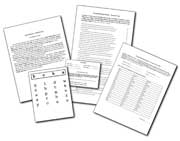


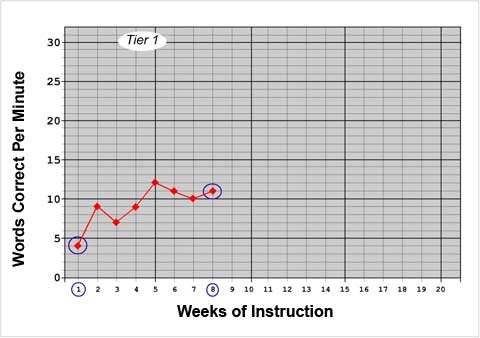









IMAGES
COMMENTS
Tier 1 instruction relies on assessment data to screen for potential reading difficulties. Teachers can monitor student performance and adjust instruction. This data-driven approach allows teachers to identify areas where students are struggling and provide targeted supports as needed. During Tier 1 instruction, teachers use research-based ...
An effective strategy to do this is through Tier 1 instruction. Tier 1 instruction provides all students with high-quality, initial classroom instruction tied to a guaranteed and viable curriculum powered by research-backed strategies. Tier 1 instructional strategies are essential to supporting students in the classroom.
Tier 1 Tier 1 provides the instructional foundation within a tiered model and is often referred to as "core." Core instruction is provided to all students (Connor et al., 2007). Data from screening and progress monitoring is used to differentiate instruction within tier 1.
16 Tier 1 intervention strategies using research-based teaching to address student needs in your school or district.
Tier 1 instruction, often termed universal support, encompasses the foundational teaching and learning strategies provided to all learners. When building a tiered intervention menu, Tier 1—as it's aptly named—is the very first level of student support. In essence, Tier 1 instruction forms the initial, critical layer of intervention, and ...
How can you intensify instruction at Tier 1? Increase Strength. • Ensure that Tier 1 is designed and delivered using evidence-based practices shown to improve desired outcomes. • Consider how effective the core program is for students struggling in reading, math, writing, and/or behavior, and for the populations that you serve.
Tier 1 typically consists of 90-120 minutes of instruction that follows an evidence-aligned scope and sequence and instructional routines. Ideally, interventionists push in and provide Tier 1 small-group instruction along with the classroom teacher.
Abstract Understanding the efficacy of evidence-based reading practices delivered in the Tier 1 (i.e. general classroom) setting is critical to successful implementation of multi-tiered systems, meeting a diverse range of student learning needs, and providing high quality reading instruction across content areas. This meta-analysis presents evidence on the effects of Tier 1 reading instruction ...
Using an A-B-BC-B-BC design, we compared the effectiveness of a Tier 2 intervention alone with a combined Tier 1 + Tier 2 intervention. When the class-wide Tier 1 program was layered on top of the Tier 2 intervention, the student's academic engagement showed an increase in level and stability.
In these sections you'll learn more about the specific goals and essential ingredients of MTSS, and how the framework aligns with evidence-based Tier 1 instruction and Tier 2 and Tier 3 intervention. Many teachers ask, "what does evidence-based instruction really mean, and how much do I need to know about the research?". We offer some ...
After reviewing the research, the What Works Clearninghouse recommends that in tier 1 of Response To Intervention, schools provide differentiated reading instruction for all students based on assessments of students' current reading levels.
This meta-analysis presents evidence on the effects of Tier 1 reading instruction on the reading outcomes of students in Grades 4-12, and a synthesis of effects for students identified as ...
Tier 1 promotes the adoption of research-based practices, which for some schools may require consideration of new instructional pro-grams, evaluation of existing instruction, and reorganization of school resources.
5 Must-Haves for Good Core Instruction. 1. Relevant evidence-based curriculum. Curriculum refers to an evidence-based, standards and competency-aligned sequence of planned experiences that help learners capture content concepts and applied skills that follow local standards, graduate profiles, career skills, social and emotional learning, and ...
At Tier 1, considered the key component of tiered instruction, all students receive instruction within an evidence-based, scientifically researched core program. Usually, the Tier 1 instructional program is synonymous with the core reading or math curriculum that is typically aligned with state standards.
The research shows that typically for successful MTSS frameworks, 80% of learners should be meeting grade-level standards and expectations from Tier 1 instruction alone without any additional interventions or extensions, Ironside said.
Tier 1 Powerful classroom instruction begins with the adoption and use of an evidence-based curriculum, but effective teachers do not simply teach such a program page-by-page in the same way for all students. Rather, they differentiate instruction, providing instruction designed to meet the specific needs of students in the class."
High-Quality Instruction High-quality instruction is effective instruction provided to all students in the general education setting using research-validated practices. Depending on the available resources and their students' needs, teachers may choose to provide adaptations for the identified students as part of high-quality instruction.
Tier I science and social studies instruction provide an ideal context for helping students master. round knowledge, which are critical components for improving readin. comprehension from K to grade 4 and through middle and high school. receives little time and attentio.
The universal tier—or Tier 1—is the curriculum, instruction, and assessments that we provide to all students in a grade level. This is the instruction that's guaranteed for everyone. Universal tier instruction typically focuses on grade-level standards for your state. Schools use universal screening data to identify the effectiveness of ...
Combining targeted, direct instruction in word attack and vocabulary, paired with fluency practice in a differentiated classroom model, may be valuable in bridging the gap between research and classroom application at the Tier 1 level.
What is the goal of Tier 1 for all students and, more specifically, for my child? Can you provide the research that shows the Tier 1 instruction is high quality and evidence-based?
The Power of Tier I Instruction, Regardless of Setting A commitment to providing a strong foundation to all students is crucial at any school.
There is limited research with mixed results about student reading gains in Grades 1 to 5 within typical school-implemented Response to Intervention (RTI). As part of a larger study, we used school-administered screening data on a widely used computer-adaptive test (Measures of Academic Progress) to describe reading gains across one academic year.
Tier 1 grant proposals will be accepted and reviewed on a rolling basis starting Aug. 26. Tier 2 grant proposals will be accepted Aug. 26 - Sept. 16 (11:59 p.m.) Tier 2 grants provide up to $5,000 for the development or expansion of public and community-engaged scholarship projects. Current CU Boulder faculty, staff, and graduate students…
At State of Texas State address, President Kelly Damphousse said the university's goal is to attain Carnegie tier one research status, or R1. News Sports Hookem.com Austin360 Opinion Advertise ...
The R1 grouping is intended to capture institutions where there is a very high amount of research occurring, measured by the number of research/scholarship doctorates awarded and the amount of spending on research and development. ... On November 1, 2023, ACE and the Carnegie Foundation announced the changes outlined above as we work toward the ...
Contact your DOH Grant Manager directly, or email [email protected]. General Instructions: (Reports that do not comply with these instructions will be returned for correction) Please complete all of the items as instructed. Do not delete instructions.
Supply in primary markets increased by 10% or 515.0 megawatts (MW) in H1 2024 and by 24% or 1,100.5 MW year-over-year. The overall vacancy rate for primary markets fell to a record-low 2.8% in H1 2024 from 3.3% a year earlier, while the overall vacancy rate for secondary markets fell to 9.7% from 12.7% over the past year.
Advancements in natural language processing (NLP) technologies offer a unique opportunity to furnish aircraft crews, primarily pilots, with digital instructions for taxiing operations. Digital taxi instructions, delivered either as text or graphics, can streamline taxiing procedures, thereby reducing radio congestion, minimizing communication errors, and enhancing aircraft monitoring.